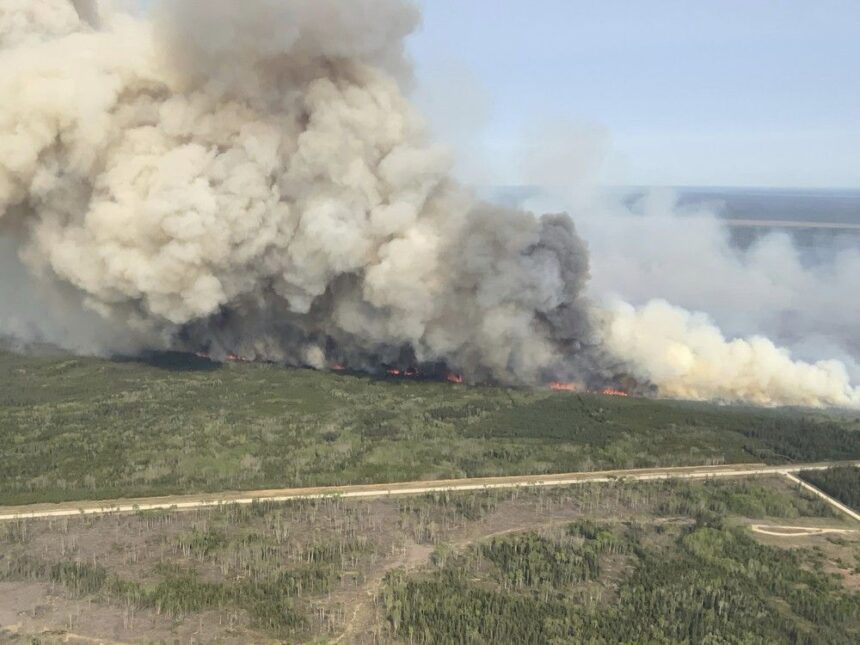The skies above Flin Flon remain ominously clear as emergency crews battle a growing wildfire that has edged dangerously close to the northern Manitoba mining community. With no rain in the immediate forecast, the situation has evolved into a race against time and weather as firefighters work to contain the blaze that threatens both Manitoba and Saskatchewan border communities.
“We’re facing critically dry conditions with relative humidity dropping below 30% during peak afternoon hours,” said Marcus Thomlinson, Manitoba’s wildfire operations coordinator. “These conditions create the perfect environment for rapid fire expansion and unpredictable behavior.”
The wildfire, which ignited Monday approximately eight kilometers northwest of Flin Flon, has already consumed over 2,700 hectares of boreal forest. Local authorities enacted a state of emergency Tuesday evening as the fire continued its advance, prompting evacuation alerts for vulnerable residents in outlying areas.
According to CO24 Canada News, provincial resources have been mobilized with impressive speed. Eight water bombers, including assets borrowed from neighboring provinces, have been conducting continuous aerial suppression operations. Meanwhile, 85 firefighters are working on establishing containment lines, supported by 12 helicopters and various heavy equipment.
The timing couldn’t be worse for the region. Environment Canada meteorologists confirm the area has experienced significantly below-average precipitation this spring, creating tinderbox conditions throughout northern Manitoba’s forests. The forecast shows no meaningful rainfall for at least the next seven days.
“What makes this particular fire concerning is its proximity to critical infrastructure,” explained Dr. Ellen Morris, wildfire ecology specialist at the University of Manitoba. “The fire is threatening not just residential areas but also power transmission corridors that supply both Flin Flon and communities across the Saskatchewan border.”
The fire has already forced the closure of Highway 10 north of Flin Flon, complicating both evacuation planning and the movement of emergency resources. Provincial officials have established an emergency operations center in The Pas to coordinate the multi-agency response.
This wildfire represents the largest of 27 active fires currently burning across Manitoba, according to the provincial natural resources department. While spring wildfires are not uncommon in the region, the scale and proximity to populated areas make this event particularly concerning for emergency management officials.
Local resident Harold Paulson, who has lived in Flin Flon for over four decades, described the atmosphere in town as tense but organized. “You can smell the smoke everywhere, but people aren’t panicking. We’ve been through tough times before with the mines. The community knows how to pull together.”
Health authorities have issued air quality advisories for Flin Flon and surrounding communities, warning that shifting winds could quickly bring dangerous smoke conditions to populated areas. Residents with respiratory conditions have been advised to prepare for possible evacuation if air quality deteriorates.
Economic implications loom large as well. As CO24 Business has reported in previous coverage of Canadian resource communities, Flin Flon’s economy remains heavily dependent on mining operations that could face disruption if the fire approaches industrial sites or if smoke conditions prevent safe operations.
This wildfire emergency emerges against the backdrop of climate scientists’ warnings that Canada’s boreal forest regions face increasing wildfire risks due to climate change. Last year saw record-breaking wildfire destruction across Canada, with over 18 million hectares burned nationwide.
As crews work around the clock to protect Flin Flon and neighboring communities, the question remains: how will northern communities adapt to what appears to be an escalating pattern of wildfire threats in a region where forests and human settlements have coexisted for generations?

























